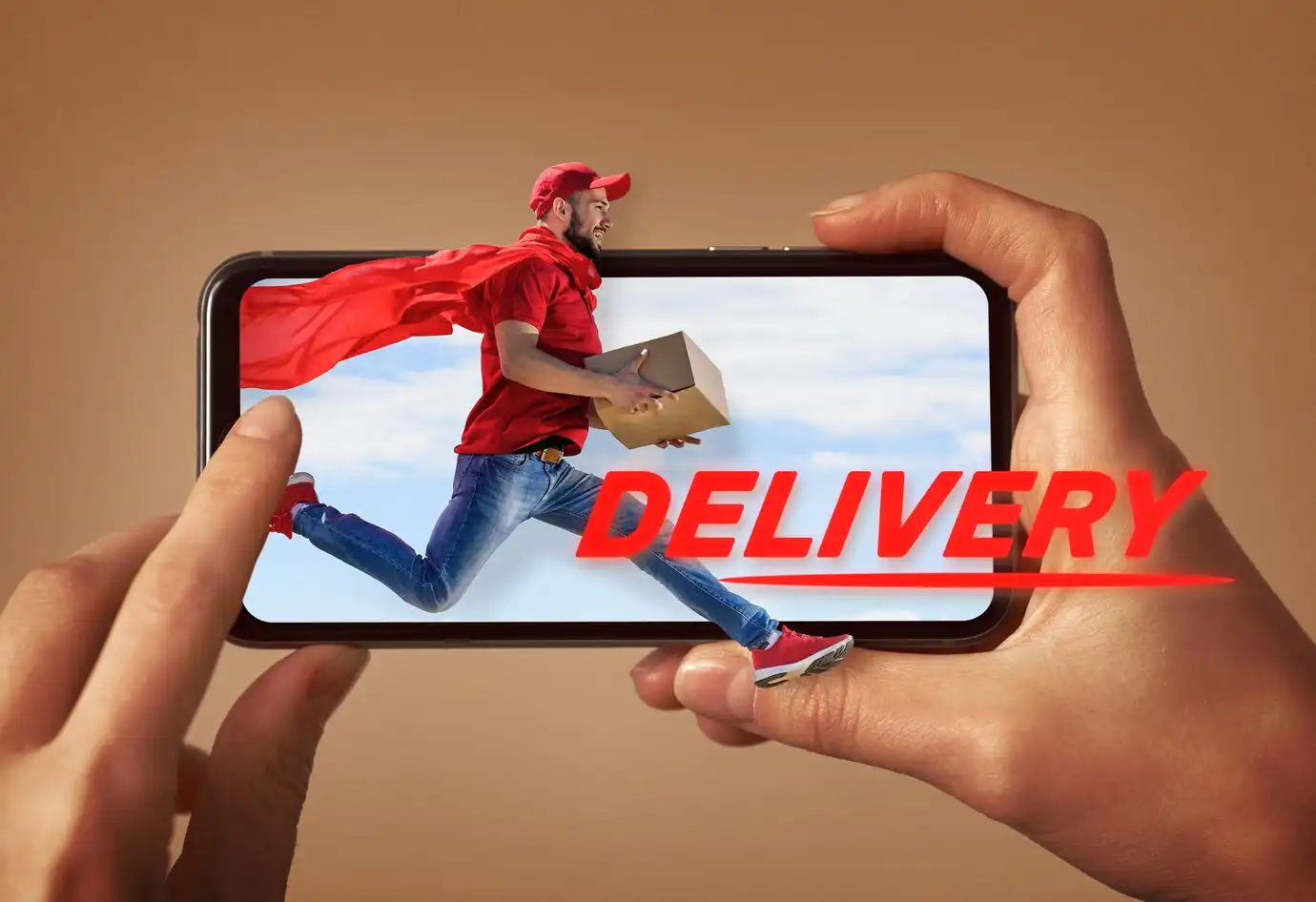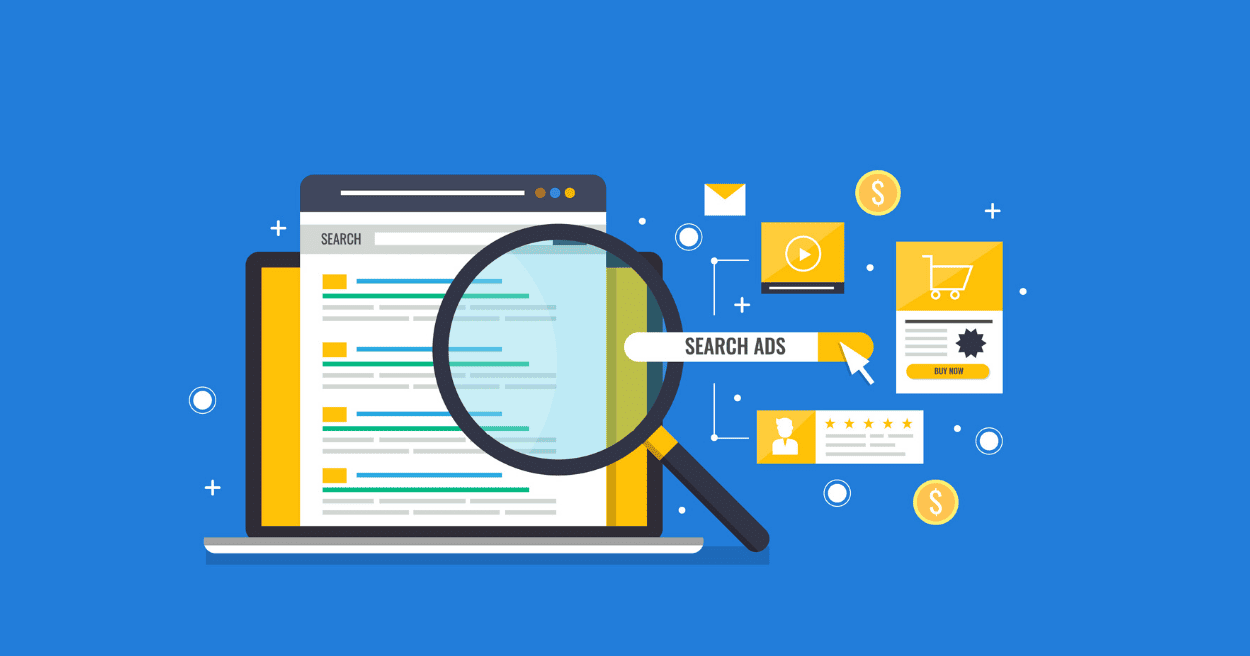Contents
- What is Saas Marketing?
- How to Get Leads from SaaS Marketing?
- How to Market Your SaaS Product?
- How to Sell Your SaaS Product?
- Different Components of SaaS Marketing
- The Concept of SaaS Marketing
- How is SaaS Marketing Different from Traditional Marketing?
- Why is SaaS Marketing Important?
- SaaS Terminology You Need To Know
- SaaS Marketing Guide
- Top Channels for SaaS Marketing
- Conclusion
The SaaS industry is booming. With a staggering $232 billion projected revenue in 2025, it's clear that businesses are flocking to cloud-based solutions. But amidst this digital gold rush, standing out is a herculean task.
Thousands of SaaS companies launch daily, each vying for a piece of the market. The challenge? Cutting through the noise. You need experienced SaaS marketing specialists who can attract and convert leads effectively to ensure your success.
Processes in SaaS business can be streamlined and optimized by SaaS solutions and services offered by a saas marketing agency. In this blog, we'll delve into the strategies that have proven successful for top-tier SaaS companies.

What is Saas Marketing?
SaaS marketing is a specialized promotion focused on creating awareness and advertising software as a service (SaaS) products. Its primary objectives include introducing a product to the market, establishing its positioning, and fostering awareness for the SaaS organization.
SaaS marketing, particularly in B2B SaaS marketing, involves specialized strategies to promote and sell subscription-based products, emphasizing the importance of digital marketing for SaaS success. Key elements include a compelling value proposition, engaging experiences like free trials, and adapting to evolving customer preferences.
SaaS Marketing Vs. Traditional Marketing
Similarities:
- Objective: SaaS and traditional marketing share the goal of building brand awareness to create demand for their respective products or services.
- Audience Understanding: A deep understanding of the target audience is essential for both SaaS and traditional marketing teams.
- Intersection: outbound and inbound marketing strategies create an intersection between SaaS and traditional marketing approaches.
- Varied Marketing Styles: The marketing style for a SaaS business varies based on the product's target audience, with a predominant focus on online platforms and software marketing strategy.
Differences:
- Measurement of Success: SaaS digital marketing relies heavily on data and metrics, including Monthly Recurring Revenue (MRR), Customer Acquisition Cost, and Lifetime Value. In contrast, traditional marketing often depends on subjective measures such as brand awareness and recall.
- Audience Focus: SaaS marketing is specifically tailored for a target audience primarily of businesses and individuals utilizing software in their daily operations. Traditional marketing, on the other hand, adopts a broader approach, targeting a more general audience.
- Online vs. Offline Presence: SaaS marketing predominantly invests in online advertising and marketing efforts, aligning with the SaaS buyer's journey. Digital marketing SaaS aligns with software marketing strategies, emphasizing online channels. Traditional marketing, encompassing methods like print advertising, billboards, and TV commercials, extends its reach beyond online platforms.
- Strategy Emphasis: SaaS marketing strategies involve creating valuable content, employing SEO techniques, paid advertising, and referral marketing. The focus is on lead generation, conversion, and customer retention. For instance, Paperbell, a coaching SaaS tool, offers readers a free report on coaching sessions, encouraging them to try the product. Traditional marketing employs more general promotional approaches.
Challenges of SaaS Marketing
SaaS marketing comes with its challenges, and companies must navigate them effectively.
- Customer Service Expectations: Providing top-notch customer service is a big deal in SaaS. Customers expect quick and helpful support, especially considering the potential for technical glitches. To keep customers happy, companies should offer features like live chat support and ensure access to technical help 24/7. Using customer portal solutions can also make problem-solving quicker and easier.
- Technical Issues: AI SaaS developers must stay on their toes for unexpected technical problems. Thorough testing before launching new versions helps, but it's impossible to catch everything. Developers should be ready to fix any surprises that pop up post-launch promptly.
- Outsmart the Market: Standing out in the competitive SaaS market, especially for smaller companies, can only be challenging with a huge advertising budget. The key is creating unique content that highlights what makes your product special. Sharing this content on platforms like X (formerly known as Twitter), Instagram, and LinkedIn can help attract a target audience without breaking the bank.
5 Stages of Marketing Funnel
The SaaS marketing funnel is a vital tool for cloud-based businesses, comprising five key stages: Awareness, Interest, Consideration, Purchase, and Retention.
- Awareness: Introduce your product/service through ads, social media, and content to create excitement.
- Interest: Prospective buyers seek information, research your offerings, read reviews, and explore pricing and features.
- Consideration: Check if your product fits their budget; clear descriptions and pricing on your website are crucial.
- Purchase: Streamlined checkout processes and responsive customer support ensure a smooth transaction.
- Retention: Customer success is critical for long-term relationships; retained customers are likelier to recommend and make repeat purchases.
SaaS Marketing Decoded: Strategies to Scale Faster
Successful SaaS marketing goes beyond generating leads—it’s about nurturing relationships and driving long-term retention. Explore data-driven strategies that fuel customer acquisition, and boost engagement.
How to Get Leads from SaaS Marketing?
Securing leads for your SaaS business involves targeted lead generation. There are three key groups: those actively seeking your service, potential switchers, and dissatisfied customers.
- Actively Seeking: Use traditional methods like ads and inbound marketing (e.g., free trials).
- Potential Switchers: Avoid third-party leads for email marketing. Instead, create engaging content like blogs to attract users from competitors.
- Dissatisfied Customers: Engage with dissatisfied customers through influencer marketing, utilizing influencers to address pain points across various platforms, fostering trust, and attracting enthusiastic leads who have already made informed decisions.
How to Market Your SaaS Product?
Promoting SaaS products involves both off-site and on-site strategies. Follow these five marketing tips to enhance your product visibility:
- PPC Advertising: Craft compelling ad copy for precise targeting, taking advantage of the high conversion rates associated with PPC ads. Recent studies reveal that nearly half of mobile PPC ad clickers initiate a call to the advertiser. Given the higher conversion rates compared to organic results, utilizing PPC is an obvious choice if your budget allows it.
- Maintain Transparent Pricing: Establish trust by presenting a consistent and transparent pricing structure. Display monthly and yearly prices side by side for clarity.
- Optimize with SEO: If PPC is not feasible, enlist a SaaS marketing agency for SEO to attract sustained traffic over time. Although results may take time, SEO helps target your ideal customers, generating sustained traffic over time at no extra cost.
- Offer Brief Product Trials: Provide short, credit card-required free trials, sending reminders and offering extensions to showcase commitment to customer satisfaction.
- Implement Three- or Four-Tiered Pricing: Simplify your pricing structure with three main tiers, potentially adding a fourth for specific business models. Showcase essential features and encourage exploration for additional benefits.
How to Sell Your SaaS Product?
Here are some practical tips to boost your SaaS platform's sales and improve customer conversion:
- Landing Page: Create a standout landing page that gives visitors all the critical info they need in one place. To make it compelling, consider hiring a skilled copywriter who can sell your product through engaging descriptions.
- Comparison Tables: Make it easy for customers by showcasing your strengths over the competition in a comparison table. Keep it accurate by regularly checking competitors' stats and mentioning the last update date. Add a disclaimer to make the information transparent.<>
- Use Videos: Use short videos (less than three minutes) to demonstrate your product on the landing page. This can be an alternative to a free trial. Remember to add captions for clarity, especially on different browsers and mobile devices.
- Quick and Simple Sign-Up: If you have convinced visitors to sign up, don't scare them away with a lengthy form. Ask for essential info and focus on getting their email for future engagement.
- Live Chat: Customer service matters. Live chat has become a cost-effective favorite, providing quick responses to queries. Be cautious with scripted responses – they can be annoying. Consider FAQs as a user-friendly alternative.
Different Components of SaaS Marketing
To achieve sustained success in Software as a Service (SaaS) marketing, it is essential to optimize five key components:
- Lead Generation: The initial step involves attracting potential customers. Strategies such as offering free trials and encouraging newsletter subscriptions effectively generate qualified leads.
- Lead Nurturing: Once leads are acquired, various marketing tactics become crucial for nurturing and converting these prospects into loyal customers. This involves utilizing proven strategies to enhance the conversion rate.
- Customer Retention: To retain the target audience, leveraging promotional content and discounted coupons can contribute significantly to customer satisfaction. Ensuring ongoing value and positive experiences is paramount in maintaining customer loyalty.
- Revenue Enhancement: Cross-selling and upselling strategies with existing customers are pivotal in maximizing revenue. Identifying opportunities to offer additional services or upgraded features can contribute to the overall financial success of the SaaS business.
- Performance Tracking: Evaluating the success of SaaS marketing initiatives involves monitoring key metrics, including churn rate, monthly recurring revenue, customer lifetime value, retention, and acquisition cost. These metrics give robust insights into the overall health and effectiveness of the marketing efforts.
The Concept of SaaS Marketing
Saas marketing in a startup is a specialized field that promotes and sells SaaS products and services. Digital marketing for SaaS or digital marketing for SaaS companies, and marketing a SaaS product are critical aspects of SaaS marketing. SaaS digital marketing and SaaS digital marketing strategies involve specialized tactics and SaaS marketing best practices to promote and sell subscription-based SaaS products. A well-defined marketing strategy for SaaS aims to create a compelling value proposition, spark interest, and entice customers to try the SaaS product.
SaaS marketing tactics, tips, and ideas focus on engaging experiences like free trials and product demos and adapting to evolving customer preferences. Marketing for SaaS companies and marketing for SaaS products requires continuous innovation, strategic refinement, and leveraging digital marketing SaaS to achieve sustainable growth in the competitive market.
It's distinct from traditional marketing in several ways:
Educational Content:
SaaS marketing often emphasizes educating potential customers about the value and benefits of the software. This may involve producing blog posts, whitepapers, webinars, and other content that explains how the software solves specific problems. Approximately 90% of SaaS businesses incorporate blog posts as an integral component of their online marketing strategy.
Free Trials and Demos:
Many SaaS companies offer free trials or product demos to allow potential customers to experience the software before committing to a subscription. This "try before you buy" approach is common in SaaS marketing.
Customer-Centric Approach:
SaaS marketing often prioritizes customer needs and satisfaction. This includes providing excellent customer support and addressing user feedback promptly, as SaaS success relies on customer retention and long-term relationships.
Subscription Models:
Marketing strategies often revolve around subscription models, focusing on acquiring and retaining customers over the long term.
Data-Driven Marketing:
SaaS companies rely heavily on data and analytics to optimize marketing efforts. They track user behavior, conversion rates, and other metrics to refine their strategies.
Innovation and Updates:
SaaS marketing highlights the continuous innovation and updates that come with SaaS products. This can create a sense of excitement and anticipation among users.
Targeted Marketing:
SaaS companies often tailor their marketing efforts to specific niches and user segments. They use data to identify and target potential customers most likely to benefit from their software.

Go From Leads to Lifetime Customers
From SEO to automation, SaaS marketing requires a strategic, tech-driven approach. Learn how top brands optimize funnels, reduce churn, and maximize ROI in an ever-evolving digital landscape.
How is SaaS Marketing Different from Traditional Marketing?
SaaS and traditional marketing share common goals, such as building brand awareness and understanding the target audience. However, the two significantly differ in strategies, metrics, and mediums used. Here's a closer look at how SaaS marketing diverges from traditional marketing:
1. Measurement of Success:
SaaS Marketing: SaaS marketing places a strong emphasis on data and metrics. Key performance indicators (KPIs) such as Monthly Recurring Revenue (MRR), Customer Acquisition Cost (CAC), and Lifetime Value (LTV) are central to evaluating success. These metrics help SaaS companies track their financial performance, customer acquisition efficiency, and lifetime relationships.
Traditional Marketing: Traditional marketing often relies on more subjective measures, such as brand awareness and recall. Success in traditional marketing is assessed through surveys, focus groups, and ad recall studies. It's often harder to directly attribute revenue to specific traditional marketing efforts.
2. Mediums and Channels:
SaaS Marketing: SaaS marketing is specifically tailored to promote and sell software products or services online. This involves digital strategies like content marketing, search engine optimization (SEO), paid advertising (e.g., pay-per-click campaigns), email marketing, and referral marketing. The primary investment is in digital channels and platforms.
Traditional Marketing: Traditional marketing takes a broader approach, encompassing offline mediums such as print advertising, billboards, TV commercials, radio spots, and physical events. While some SaaS companies may dabble in traditional advertising, the core focus is on digital channels due to the online nature of their products.
3. Lead Generation and Conversion:
SaaS Marketing: The B2B SaaS strategy strongly emphasizes generating leads through online content, email marketing, and targeted campaigns. Converting these leads into paying customers is a central goal, often facilitated by offering free trials, demos, or other incentives. The focus isn't just on acquiring and retaining customers over time through exceptional service and ongoing engagement.
Traditional Marketing: Traditional marketing focuses on creating brand awareness and capturing a broad audience. Conversion strategies in traditional marketing tend to be less immediate and direct, as the path to purchase is often longer and involves physical visits or offline interactions. The emphasis here is on attracting a wide range of potential customers.
Why is SaaS Marketing Important?
There are many reasons why SaaS marketing is essential for businesses. Still, some key reasons to get SaaS marketing services from the best SaaS marketing agency are:
Improved ROI (Return on Investment):
SaaS marketing prioritizes enhanced ROI through data-driven analysis. Metrics like CAC and LTV allow informed budget allocation. Real-time performance data helps optimize strategies, leading to more efficient resource use, lower acquisition costs, and higher returns.
SaaS marketing's focus on improved ROI is deeply rooted in data analysis and measurement.
Similarly, Lifetime Value (LTV) is a crucial metric that estimates the total revenue a customer is expected to generate over their lifetime as a subscriber. This metric enables SaaS businesses to gauge the long-term value of acquiring a new customer and, in turn, decide how much they can invest in customer acquisition.
Ultimately, this results in more efficient use of resources, lower customer acquisition costs, and higher returns on their marketing investments.
Better Engagement:
SaaS marketing's emphasis on engagement stems from recognizing that engaged customers are more likely to become long-term subscribers. To achieve better engagement, SaaS marketing takes a customer-centric approach that involves personalized content and interactions. This approach involves creating content that resonates with the target audience's pain points and needs, making it highly relevant and valuable.
For example, email marketing is often used to nurture customer relationships. SaaS companies send targeted emails to provide users with insights, updates, and resources that cater to their interests and stage in the customer journey. This keeps customers engaged and fosters a sense of community. Engaged customers are likelier to stay loyal, refer the software to others, and ultimately increase their lifetime value.
Enhanced Branding:
In SaaS marketing, branding goes beyond logos. It's about communicating a unique value proposition and solving customer problems. Strong branding establishes trust and credibility, which is crucial in an industry where reliability is critical. Consistent messaging and value delivery across touchpoints build a reliable brand recognized for quality.
Building a strong brand identity is critical in an industry where trust and credibility are paramount. Users need to feel secure in the software they're subscribing to, and effective branding goes a long way in establishing that trust. When a SaaS company's brand is recognized for its reliability and quality, it becomes the go-to choice for customers.
Branding is also about consistency in messaging and a promise of value. SaaS marketing ensures that these brand promises are consistently delivered through every customer interaction and touchpoint, from the website and marketing materials to the user experience within the software.
Competitive Edge:
The competitive edge in SaaS marketing arises from effectively differentiating the company's offerings from those of competitors. Companies must communicate why their product stands out in a crowded SaaS market, where multiple providers may offer similar solutions. According to Semrush, performing competitor analysis is one of the most beneficial content marketing tactics.
SaaS marketing strategies highlight unique features, usability, and cost-effectiveness to demonstrate superiority. This differentiation strategy helps potential customers make informed choices, elevating the company's brand and reputation.
Maintaining a competitive edge is especially critical as it can be the deciding factor for customers. Effective marketing ensures that the brand remains top-of-mind when potential customers are ready to decide. The combination of effective differentiation and strategic marketing can tip the scales in favor of one SaaS company over another in a competitive landscape.
Customer Retention:
In SaaS, the focus on customer retention is as essential as customer acquisition. Effective marketing strategies ensure that existing customers continue to derive value from the software. Customer retention is achieved through various means, such as customer onboarding, ongoing communication, and relevant email campaigns.
Customer onboarding, for instance, ensures that users have a positive initial experience with the software, increasing their likelihood of becoming long-term customers. Ongoing communication through email campaigns provides users with insights, updates, and tips, keeping them engaged and invested in the software.
Reducing churn (the rate customers leave) is a core goal of SaaS marketing. Happy, engaged customers are less likely to cancel their subscriptions, leading to increased customer lifetime value and stable, predictable revenue.
Scalability:
Scalability in SaaS marketing is about the ability to grow alongside the business. As SaaS companies expand and reach a broader audience, their marketing strategies must efficiently accommodate this growth. SaaS marketing ensures that as the customer base and SaaS market footprint increase, the marketing efforts can scale without experiencing a proportional cost increase.
This scalability is crucial for long-term growth and profitability. Effective marketing practices enable companies to reach a larger audience without overextending their resources.
It ensures that the marketing efforts can adapt to the evolving needs of the business, allowing SaaS companies to achieve their growth objectives while maintaining a manageable saas marketing budget. SaaS marketing provides the flexibility and adaptability needed for sustainable business expansion.

SaaS Terminology You Need To Know
There are some technical jargon and terminologies that, as a SaaS business owner, you need to know. So, here are a few of them:
-
Customer Lifetime Value (CLV):
Customer Lifetime Value, often called CLV, is a dynamic metric that evolves as customers interact with your product or service over time. It's not a fixed number and requires ongoing tracking to understand how customer behavior impacts its value.
-
Businesses can adjust their marketing strategies to maximize profitability by continually monitoring CLV. Additionally, when calculating CLV, it's essential to account for the costs related to servicing and supporting customers. This ensures a more accurate representation of the true financial impact of your customers over time.
-
Customer Acquisition Cost (CAC):
The CAC metric is not a one-size-fits-all value but can vary significantly across different marketing channels and strategies. SaaS companies can pinpoint the most cost-effective customer acquisition methods by analyzing CAC data for each channel.
-
Comparing CAC to industry benchmarks provides valuable insights into a company's competitiveness and efficiency in acquiring new customers. This knowledge empowers businesses to allocate resources more effectively and make data-driven decisions when planning their marketing campaigns.
-
CLV:CAC Ratio:
The CLV:CAC ratio is a crucial metric that reflects the sustainability and efficiency of a business model. A ratio below 1 implies that a company is spending more on acquiring customers than those customers are expected to generate in revenue, indicating an unsustainable situation.
-
On the other hand, a high CLV:CAC ratio indicates that a company is efficiently acquiring and retaining customers, allowing it to reinvest profits into scaling customer acquisition efforts and driving rapid growth using SaaS growth marketing. This metric provides a clear picture of a business's overall health and potential for expansion.
-
Customer Churn Rate:
Churn rate, the percentage of customers who stop using a SaaS product within a specific time frame, is a critical metric for customer retention. It's important to recognize that reducing churn is not solely the responsibility of customer support.
-
It's a company-wide effort that involves improving the product, enhancing customer experiences, and addressing pain points promptly. Churn analysis can reveal patterns, such as common reasons for cancellations, providing insights that can inform targeted marketing strategies and feature development to reduce churn effectively.
-
Net Promoter Score (NPS):
Net Promoter Score feedback is a valuable resource for businesses as it provides actionable insights. SaaS companies can prioritize improvements based on customer feedback and suggestions.
-
Additionally, NPS scores can be segmented by customer types, such as free trial users versus paid subscribers, allowing companies to identify areas where specific customer segments may have different perceptions. Utilizing NPS data for continuous improvement can lead to increased customer satisfaction and loyalty.
-
Customer Onboarding:
Effective customer onboarding is the most important part of the SaaS marketing mix. It can lead to higher customer retention rates, lower support costs, and increased customer lifetime value.
-
Implementing automated onboarding sequences, personalized tutorials, and in-app guidance streamlines the onboarding process and enhances the user experience. Ongoing monitoring and adjusting the onboarding process are essential to keep up with changing customer needs and expectations.
-
Monthly Recurring Revenue (MRR):
MRR is a key financial metric for SaaS companies, representing the predictable and recurring revenue generated from subscription fees on a monthly basis. Tracking MRR growth over time provides businesses with a clear picture of their revenue trajectory, helping them make informed decisions about resource allocation and expansion strategies.
-
To delve deeper, SaaS companies often employ customer segmentation to analyze MRR by customer type, allowing for more targeted marketing and retention efforts for different segments.
SaaS Marketing Guide
Here’s the complete guide for all the SaaS businesses that can frame and implement an effective SaaS marketing system:
-
Content Marketing Strategy:
Making a robust content marketing plan is crucial in your SaaS marketing plan. The foundation of this plan lies in understanding your target audience. Develop customer personas, which are detailed representations of your ideal customers based on research and data.
-
These personas should include demographics, business backgrounds, values, goals, influences, and motivations. Tailoring your content to match these personas will ensure that you're addressing your audience's specific pain points and preferences.
-
Consider a diverse range of content types in your content marketing strategy, such as white papers, case studies, testimonials, e-books, infographics, blog posts, social media updates, emails, webinars, and videos. This diverse content strategy will appeal to consumers at different sales funnel stages.
-
Video Creation for Consumers:
Video content is a powerful tool in SaaS marketing. To effectively create videos for consumers, you must understand your target audience's preferences and information needs.
-
You should offer longer educational videos, webinars, and other valuable content that resonates with your potential customers. Monitoring metrics such as social media engagement, website clicks, and landing page views will help you gauge the interest generated by your video content.
-
Building a Community:
SaaS marketing definition is crucial in developing a robust strategy for building a community around your Software as a Service (SaaS) product. Understanding the core concepts of Saas marketing is essential for capturing and engaging leads effectively.
-
This involves offering premium content like free trials, subscriptions, memberships, or online courses in exchange for contact information. It shows their interest and allows you to nurture and persuade them to become paying customers. Building strong customer relationships is a spontaneous effort even after acquisition.
-
By offering additional premium content and providing excellent customer service, you can strengthen your customer base, increase referrals, and retain existing customers, ultimately building a loyal community around your SaaS product.
-
Building Ideal Customer Profiles (ICPs):
Understanding your ideal customers is fundamental to a successful SaaS marketing process. Building Ideal Customer Profiles (ICPs) involves creating detailed representations of your target audience, encompassing their demographics, business backgrounds, values, goals, influences, and motivations.
-
These profiles are the basis for tailoring your marketing efforts, ensuring you address your audience's specific needs and preferences.
-
How Will You Measure Your Success:
Before launching any SaaS marketing campaign, it's crucial to determine how you will measure success. The choice of metrics will depend on your marketing channels and objectives.
-
Common metrics include the number of people reached, engagements, views, clicks, conversions, churn rate, conversion rate, click-through rate, customer retention rate, active trials, and social media follower growth.
-
These metrics enable you to track the effectiveness of your campaigns and make data-driven optimizations over time. By monitoring these metrics, you can easily calculate the return on investment for each campaign, identify improvement areas, and continue optimizing your campaigns to produce better results over time.
Top Channels for SaaS Marketing
Indeed, SaaS marketing relies on a combination of strategies to promote software products and services. Here are some key SaaS marketing strategies, including Saas marketing SEO, content marketing, Account-Based Marketing (ABM), PPC (Pay-Per-Click), and social media marketing:
1. SEO (Search Engine Optimization):
Search Engine Optimization is essential for SaaS companies to enhance their online visibility. SEO involves optimizing the content and structure of a SaaS website to rank higher in search engine results. This makes it easier for potential customers to find the software when searching for relevant keywords.
Effective SEO includes keyword research, on-page optimization, link building, and creating high-quality, informative content that appeals to search engines and users.
2. Content Marketing:
Content marketing is at the core of SaaS marketing. SaaS companies create and distribute valuable content such as blog posts, whitepapers, ebooks, webinars, and videos to educate, engage, and attract potential customers.
The goal is to address their pain points, answer their questions, and establish the company as an industry authority. High-quality content can also improve SEO and drive organic traffic to the website.
3. Email Marketing
Email marketing has been among the top channels for businesses and marketers for over a decade. It offers a powerful and affordable means of one-to-one communication and news broadcasting, and more than 90% of businesses use it.
Email marketing is the best way to generate leads, and the best part is that it's not hard to get started with or overly sophisticated.
You may use an easy approach like an automated email drip campaign or a weekly newsletter to turn leads into customers. Marketing automation solutions can help you segment your list and send automated, personalized emails after establishing an audience.
4. Account-Based Marketing (ABM):
Account-based marketing is a highly targeted approach that engages and converts specific, high-value accounts or businesses. SaaS companies identify and personalize their marketing efforts for these accounts, tailoring content and messages to their unique needs and challenges.
ABM is particularly effective for B2B SaaS providers who want to win over enterprise-level clients by nurturing strong, personalized relationships.
5. PPC (Pay-Per-Click) Advertising:
PPC advertising involves creating ads that appear when users search for specific keywords. SaaS companies bid on software-related keywords and pay when users click on their ads.
PPC can yield fast and measurable results, allowing companies to reach a specific target audience and drive immediate website traffic. Platforms like Google Ads and social media advertising (e.g., Facebook and LinkedIn ads) are popular choices for SaaS PPC campaigns.
6. Social Media Marketing:
SaaS companies use social media platforms to connect with their audience, share valuable content, and engage in conversations. This strategy helps build brand awareness, foster customer relationships, and drive traffic to the website.
Platforms like LinkedIn, Twitter, and Facebook are particularly useful for B2B SaaS companies, while those targeting a wider consumer audience may leverage platforms like Instagram and TikTok. Social media also offers opportunities for customer support and feedback.
Effective SaaS marketing often involves integrating these strategies into a cohesive and comprehensive plan. The choice of strategies depends on the specific target audience, product offerings, and business goals. By combining these strategies and adapting them to the unique needs of the SaaS business, companies can build brand awareness, attract and retain customers, and drive sustainable growth in the competitive SaaS industry.
7. Influencer Marketing
Influencer marketing is where you reach out to influencers and enlist them to promote your products. Typically, companies run influencer campaigns where they identify relevant influencers and pay them to feature a particular product. How much a single placement costs depends on the size of their following and how engaged their audience is.
A single Instagram post from a big celebrity will set you back millions of dollars. That’s not a viable strategy for most SaaS companies. The audience of big influencers is too broad, so you end up paying for many uninterested eyeballs. Thus, it is important to identify influencers with an audience that can be interested in your products or services.
Conclusion
In SaaS marketing, success hinges on the strategic interplay of various dynamic approaches. SaaS companies carve a unique path to prominence from the precision of Semantic SEO and the educational value of content marketing to the tailored focus of ABM, the immediacy of PPC, and social media marketing engagement. These strategies serve as the compass guiding companies toward their goals.
At Saffron Edge, we are both advocates of these strategies and providers. If you Hire Saas marketing experts from Saffron Edge, you will know that we specialize in delivering top-notch SaaS-based solutions and services designed to meet your unique business needs.
Whether you are launching a new SaaS venture or looking to take your existing one to the next level, we are here to help you navigate the intricate world of SaaS marketing. Our approach is results-driven, and we tailor our services to your objectives.
Get The SaaS Marketing Toolkit
Frequently Asked Questions
What is the meaning of SaaS in the SaaS marketing?
SaaS stands for Software as a Service.
What strategies can be employed to market a SaaS product effectively?
Effective marketing of a SaaS product involves combining inbound, outbound, and account-based marketing approaches.
What are some outdated SaaS marketing techniques?
Outdated strategies like gated content, prioritizing MQLs over pipeline optimization, and spending on expensive analysts for corporate whitepapers are no longer beneficial.
Related Blogs
We explore and publish the latest & most underrated content before it becomes a trend.
9 min read
What is a Go-To-Market Strategy? A Comprehensive Guide for 2026
By Shreya Debnath
Subscribe to Saffron Edge Newsletter!

Get The SaaS Marketing Toolkit










